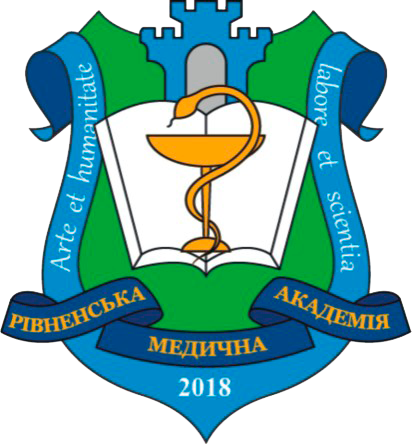ANALYSIS OF THE POTENTIAL FOR USING BLACK NIGHTSHADE RAW MATERIAL AND ITS PHARMACOTECHNOLOGICAL RESEARCH
DOI:
https://doi.org/10.32782/health-2025.1.14Keywords:
black nightshade, plant raw materials, marketing research, technological researchAbstract
The article presents generalized studies on the analysis of the potential use of black nightshade in medicine and the determination of pharmacotechnological indicators of its raw materials.A common plant used in folk medicine for the treatment of various diseases is black nightshade (Solanum nigrum L.). Recently, more and more scientific evidence has been emerging regarding the potential medical value of this plant.Studies have shown that black nightshade contains various biologically active substances (BAS), such as solanine, solasodine, saponins, flavonoids, alkaloids, and others, which have various pharmacological properties. Given the wide range of BAS and powerful pharmacotherapeutic properties of black nightshade, we conducted several physical and pharmacotechnological studies of its raw materials. The process of extracting medicinal plant raw materials (MPRM) has a complex physicochemical nature, which is influenced by variable biopharmaceutical factors, in particular, the degree of grinding of the raw materials, the nature of the extractant, the ratio of raw materials: extractant, temperature, etc. The degree of grinding of MPRM affects the density, its absorption and swelling coefficients, the diffusion rate and the completeness of the extraction of extractive substances. The fractional composition of the obtained samples of raw materials of black nightshade was 7–9 mm. The humidity of medicinal plant raw materials determines its good quality and significantly affects the yield of BAS in the extraction process. According to the results of experimental studies, it was determined that the humidity of black nightshade grass is 9.21 %. Bulk density and bulk volume of raw materials before (0.157 g/ml and 129 ml, respectively) and after (0.164 g/ml and 101 ml, respectively) shrinkage are important pharmacotechnological factors in obtaining extraction preparations, in particular when calculating the loading volume of extractors and in a number of cases determines the economic efficiency of the technological process.
References
Державна Фармакопея України: в 3 т. / Державне підприємство «Український науковий фармакопейний центр якості лікарських засобів». 2-ге вид. Харків: Державне підприємство «Український науковий фармакопейний цент якості лікарських засобів», 2015. Т. 1. 1128 с.
Спеціалізоване медичне інтернет-видання для лікарів, провізорів, фармацевтів, студентів медичних і фармацевтичних вузів «Компендіум». URL: https://compendium.com.ua (Дата звернення: 10.09.2024 р.).
Harisha CR, Prajapati PK, Jagtap CY, Shukla VJ. Micrometric study and physicochemical evaluation of Solanum nigrum Linn. leaves. The Journal of Phytopharmacology. 2016;5(3):117–121.
Lee, E.J., and Kim, J.H. “Solanum nigrum L. and Its Constituents Show Protective Effects in Inflammation”. Journal of Medicinal Food, vol. 14, no. 10, 2011, pp. 1216–1223. doi: 10.1089/jmf.2011.0056. Khare, C.P. Indian Medicinal Plants: An Illustrated Dictionary. Springer Science & Business Media, 2007.
Nallathambi, G., Raju, R., Thiruppathi, S., & Ramasamy, D. (2022). An Updated Review on Solanum Nigrum with Dynamic Role. World Journal of Pharmaceutical Research, 11(3), 1658–1676.
JAIN, Ramya, et al. Solanum nigrum: current perspectives on therapeutic properties. Altern Med Rev, 2011, 16.1: 78–85.
Li, J., Zhuang, C., & Lin, Z. (2015). Chemical constituents and pharmacological activities of Solanum nigrum. Zhongguo Zhong yao za zhi= Zhongguo zhongyao zazhi= China journal of Chinese materia medica, 40(20), 3952–3962.
Omar, H. (2017). Solanum nigrum L. Phytochemicals and their pharmacological activities: a review. Journal of traditional and complementary medicine, 7(2), 234–239.
Oyedemi, S. O., Bradley, G., & Afolayan, A. J. (2011). In vitro and in vivo antioxidant activities of aqueous extract of S. nigrum L. berries. Food research international, 44(7), 2190–2197.
Senthilkumar, G., Sivaraman, T., & Pandian, M. R. (2009). Anti-inflammatory and antioxidant activities of Solanum nigrum Linn. Indian Journal of Pharmacology, 41(5), 232.
Supriya, P., & Ramya, S. (2014). Solanum nigrum-a review on its potential as an ayurvedic herb. International Journal of Pharmaceutical Sciences and Research, 5(3), 696.
Yang, S. A., Jeon, S. K., Lee, E. J., Shim, J. H., & Moon, G. S. (2006). Antioxidant activity and phenolic compounds in aqueous extracts of four Solanum species. Korean Journal of Medicinal Crop Science, 14(6), 406–412.
Ravishankar, D., Rajora, A. K., Greco, F., Osborn, H. M. I., & Aggarwal, B. B. (2018). Solasodine: a perspective on the potential anticancer agent. Journal of enzyme inhibition and medicinal chemistry, 33(1), 98–107.
Saleem, R. S., Ahmed, M., & Ahmed, S. U. (2019). Solasodine–A promising natural anticancer agent: A comprehensive review. Journal of Drug Delivery and Therapeutics, 9(3-s), 435–440.
Moshiri, M., Ghasemi, A., & Rastegar, H. (2019). Solasodine: A Review of Its Pharmacological Properties and Anticancer Activity. Phytotherapy research, 33(11), 2823–2837.





